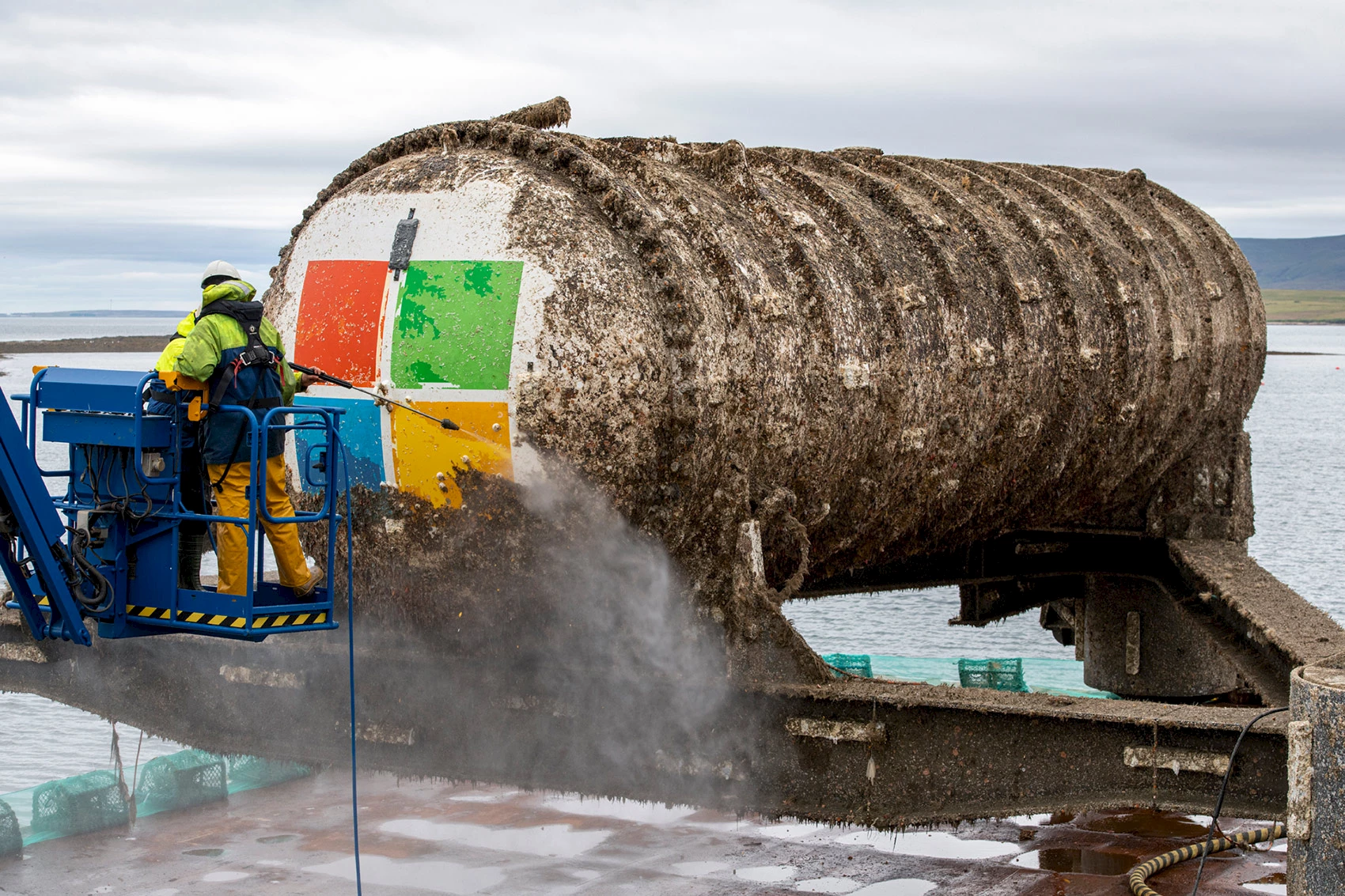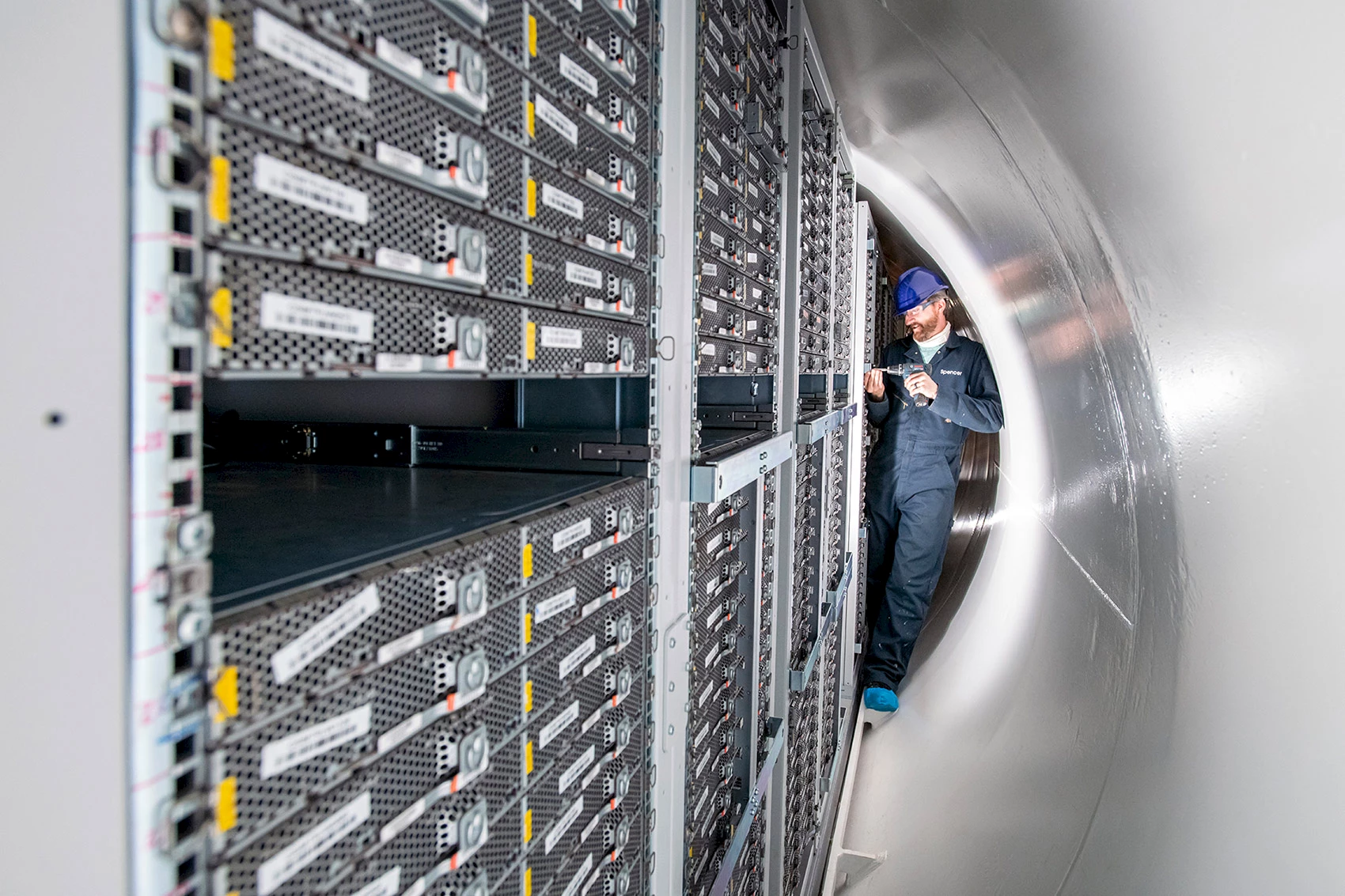Project Natick makes a splash

Project Natick. © Microsoft.
In 2014, seeking to extend its cloud capacity in a “greener”, environmentally-friendly way, Microsoft launched Project Natick, a proof-of-concept to test the feasibility of operating a server farm underwater. The expected benefits were limitless water-based cooling, and the potential to use renewable energy sources like offshore wind turbines, marine currents, tides and waves. All over the planet, more than half of the world’s population lives within 200km of the sea, and the closer datacentres are to clients, the fastest the signal between them and the cloud. After a two-year experiment with a datacentre immersed off the coast of Scotland, near the Orkney Islands, Microsoft announced that project Natick had emerged as a success. Lifted from the North Sea seafloor, the watertight tube encasing Microsoft servers was festooned with algae, barnacles and sea anemones. Once cleaned and opened, it revealed a pristine environment. The experience showed that servers operating in an underwater datacentre are eight times more reliable than those on dry land, for reasons that have yet to be fully understood. The team hypothesizes that the atmosphere of nitrogen, which is less corrosive than oxygen, and the absence of people to bump and jostle components, are the primary reasons for the difference.

⇨ YouTube, “Microsoft reveals findings from Project Natick, its experimental undersea datacenter.”
⇨ Microsoft, John Roach, “Microsoft finds underwater datacenters are reliable, practical and use energy sustainably.”
